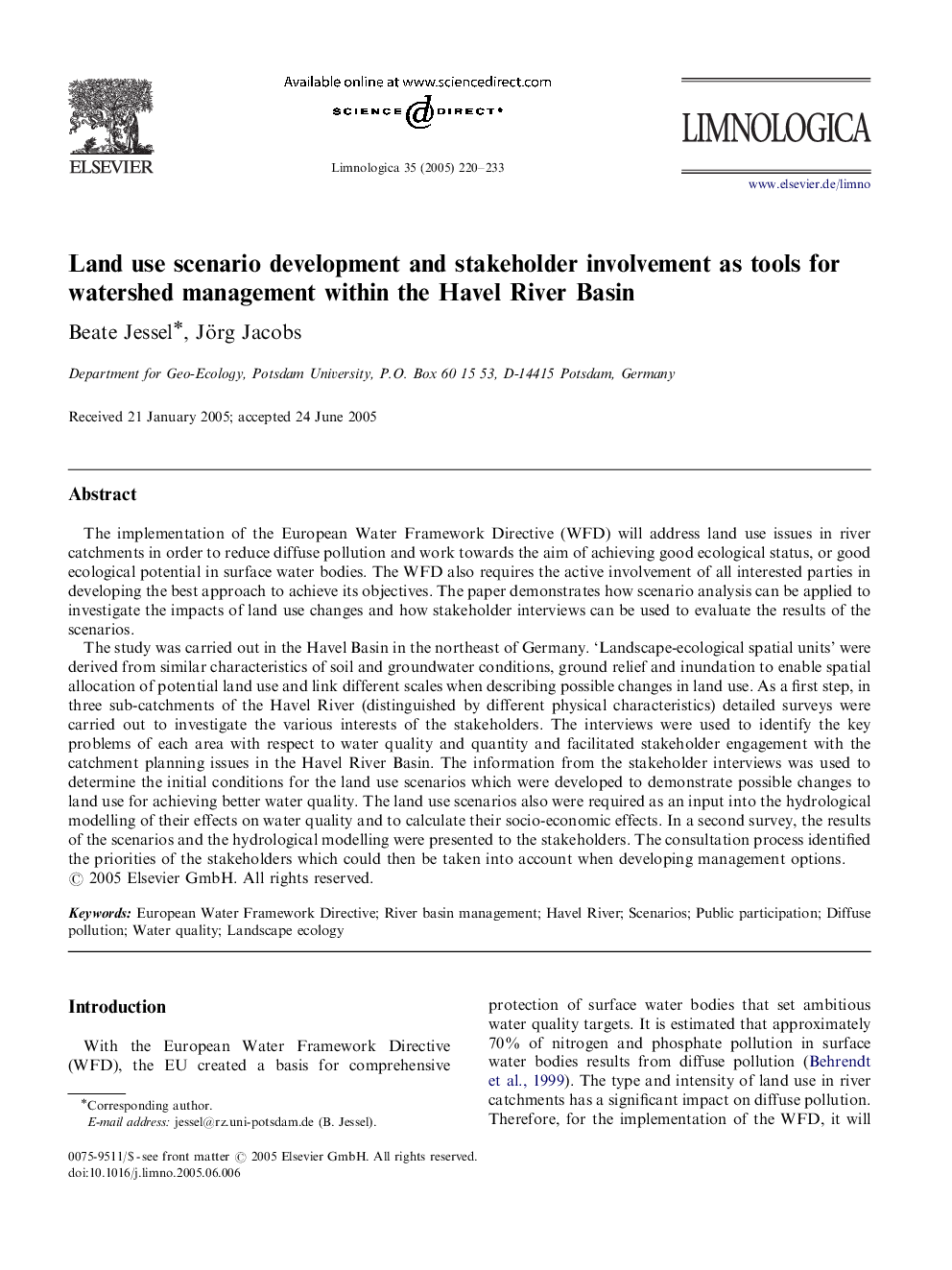| Article ID | Journal | Published Year | Pages | File Type |
|---|---|---|---|---|
| 9450685 | Limnologica - Ecology and Management of Inland Waters | 2005 | 14 Pages |
Abstract
The study was carried out in the Havel Basin in the northeast of Germany. 'Landscape-ecological spatial units' were derived from similar characteristics of soil and groundwater conditions, ground relief and inundation to enable spatial allocation of potential land use and link different scales when describing possible changes in land use. As a first step, in three sub-catchments of the Havel River (distinguished by different physical characteristics) detailed surveys were carried out to investigate the various interests of the stakeholders. The interviews were used to identify the key problems of each area with respect to water quality and quantity and facilitated stakeholder engagement with the catchment planning issues in the Havel River Basin. The information from the stakeholder interviews was used to determine the initial conditions for the land use scenarios which were developed to demonstrate possible changes to land use for achieving better water quality. The land use scenarios also were required as an input into the hydrological modelling of their effects on water quality and to calculate their socio-economic effects. In a second survey, the results of the scenarios and the hydrological modelling were presented to the stakeholders. The consultation process identified the priorities of the stakeholders which could then be taken into account when developing management options.
Keywords
Related Topics
Life Sciences
Agricultural and Biological Sciences
Aquatic Science
Authors
Beate Jessel, Jörg Jacobs,
